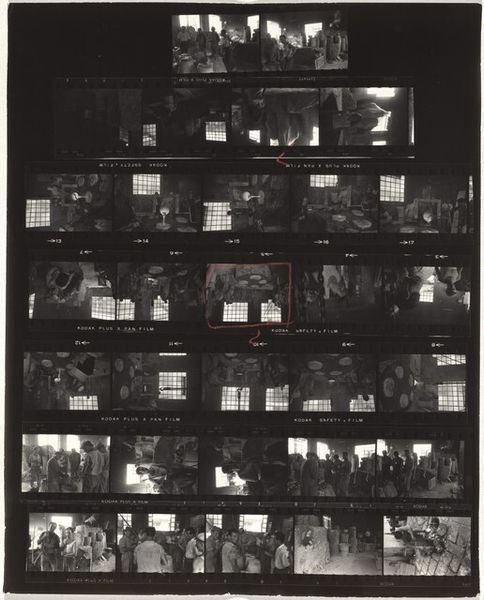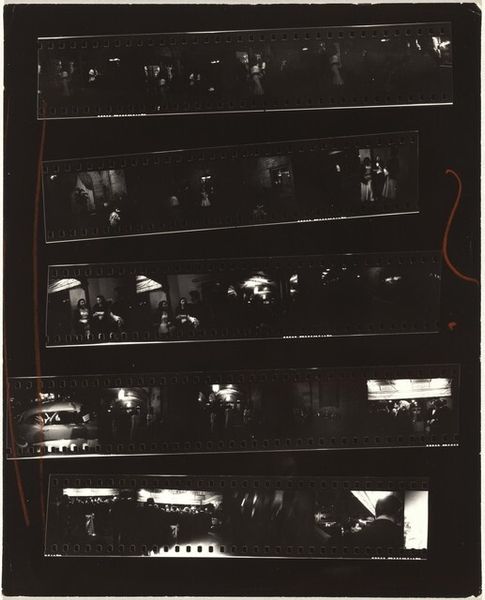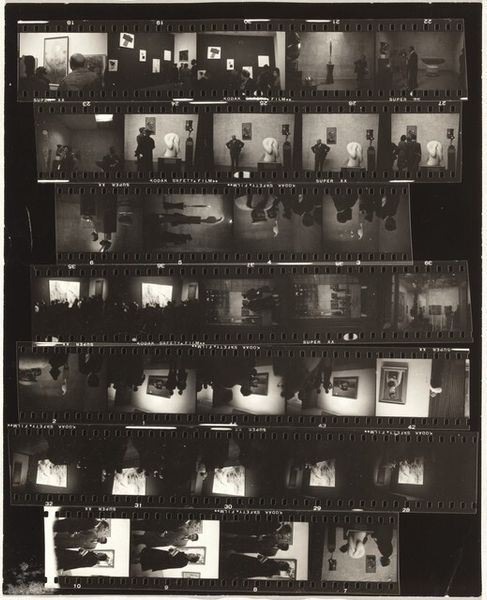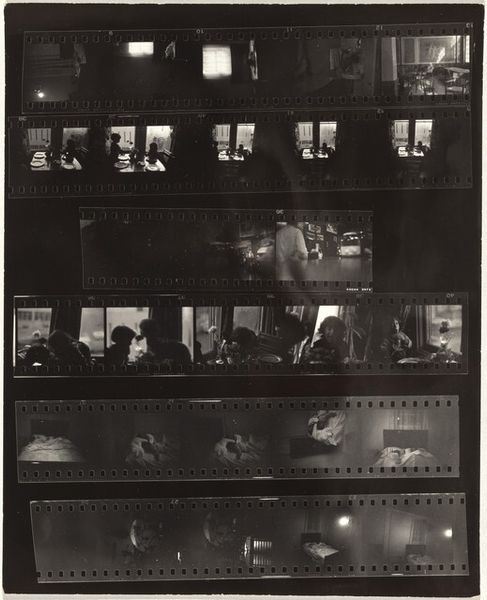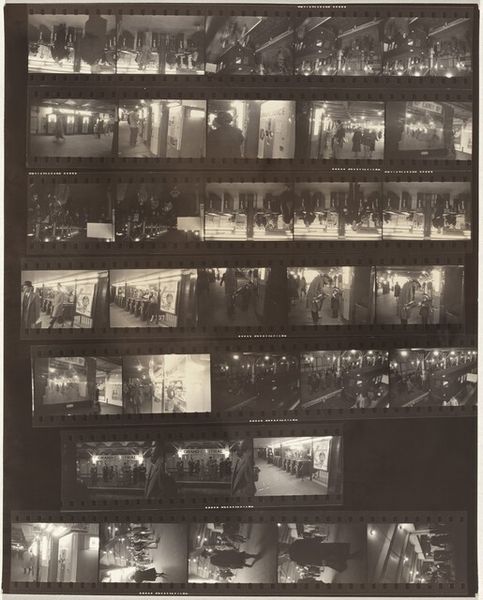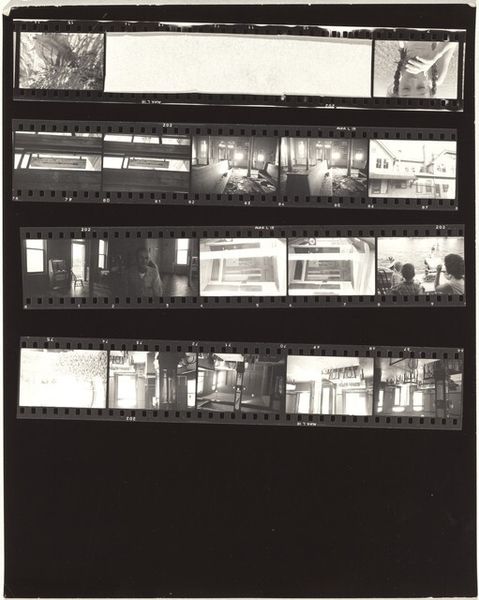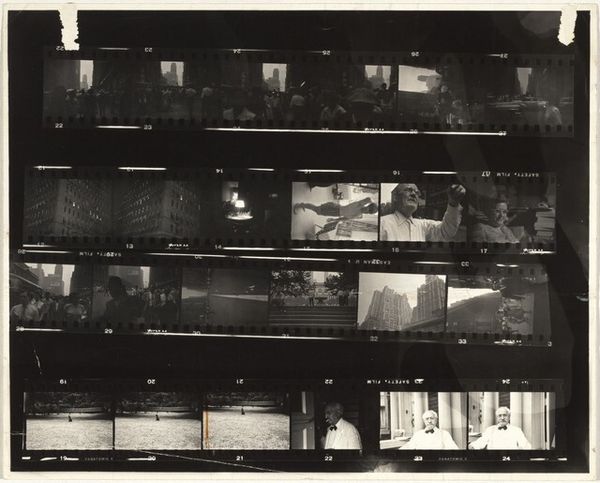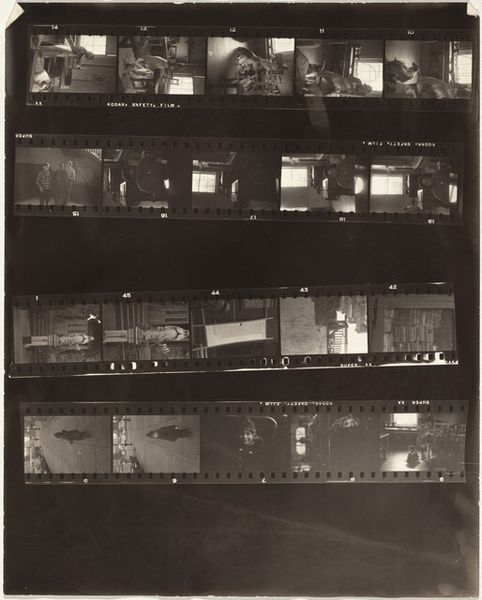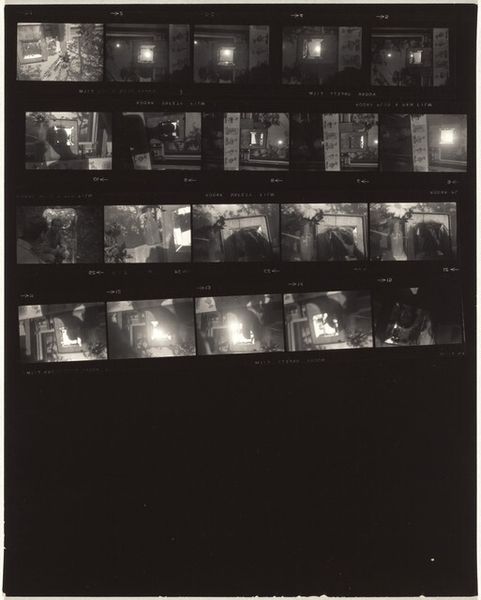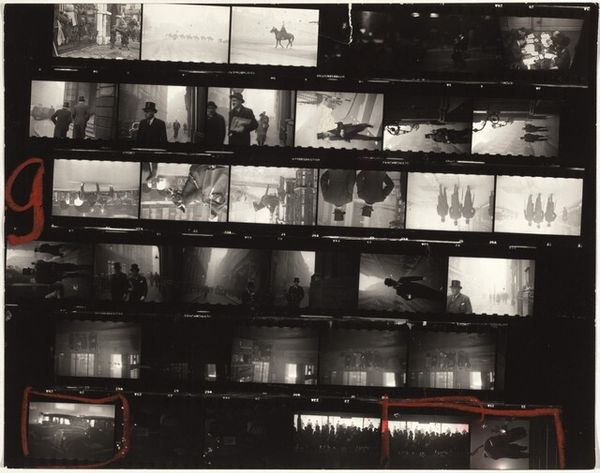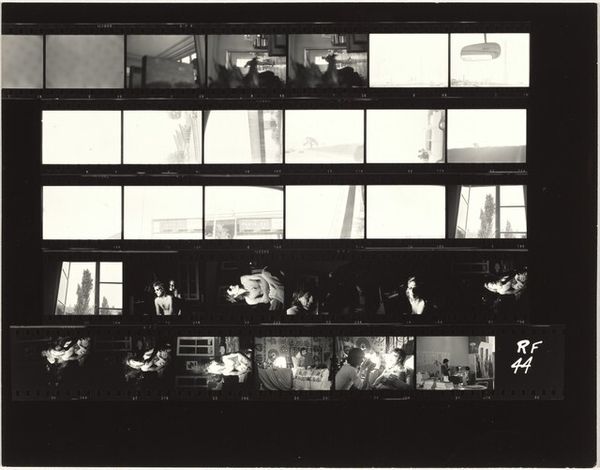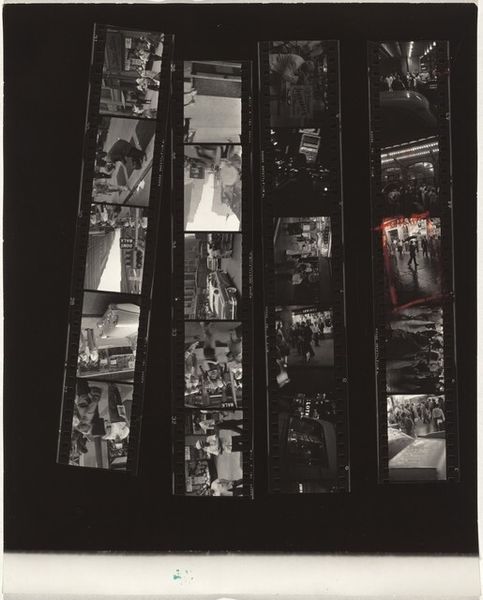
print, photography, gelatin-silver-print
#
portrait
#
abstract-expressionism
# print
#
street-photography
#
photography
#
gelatin-silver-print
#
modernism
Dimensions: overall: 25.3 x 20.5 cm (9 15/16 x 8 1/16 in.)
Copyright: National Gallery of Art: CC0 1.0
Editor: Here we have Robert Frank's "Guggenheim 496--'Helen of Troy' premiere, Los Angeles," a gelatin silver print from 1956. It's presented as the film roll itself, with multiple exposures on it. It feels gritty, raw, not at all like a typical celebrity event photo. What's your take on it? Curator: Well, let’s consider the material production first. Presenting the unedited film roll moves photography away from its accepted role of a high art "window on the world" to reveal the work, labor and editing that produces a finished photo. How do you think that choice shapes our understanding? Editor: It definitely makes it feel less glamorous. Showing us the process reveals the choices he made, or didn't make. The social context becomes visible too; you can almost feel the energy and anxiety of a premiere. Curator: Exactly! And note how Frank documented everyday life and social issues outside the Hollywood bubble too, almost a parallel material reality. He deconstructs the mythmaking around celebrity culture by presenting its production. What assumptions about Hollywood's impact on 1950’s America are being challenged here? Editor: I suppose it questions the perceived perfection and artificiality. It feels like he's trying to capture something more real beneath the surface, and the materiality emphasizes that honesty. Curator: Precisely! It encourages us to consider the means of photographic production, distribution, and consumption of these celebrity images within a specific socioeconomic frame. We start thinking critically about the social performance being played out, captured and commodified by Frank and others. It suggests a much wider distribution chain to consumers and broader public! Editor: I never thought of it that way. It's fascinating how much the materials and presentation can shift the entire meaning. Curator: Indeed! The material itself becomes a lens to understand how cultural meaning is made, challenging our assumptions about photography and the star-making machine.
Comments
No comments
Be the first to comment and join the conversation on the ultimate creative platform.
